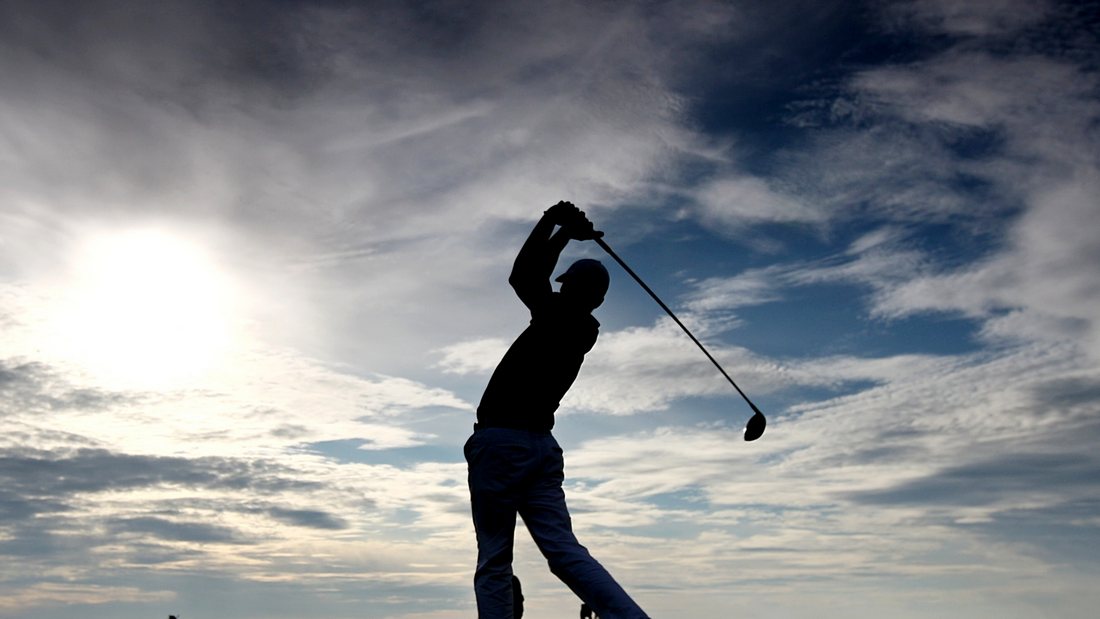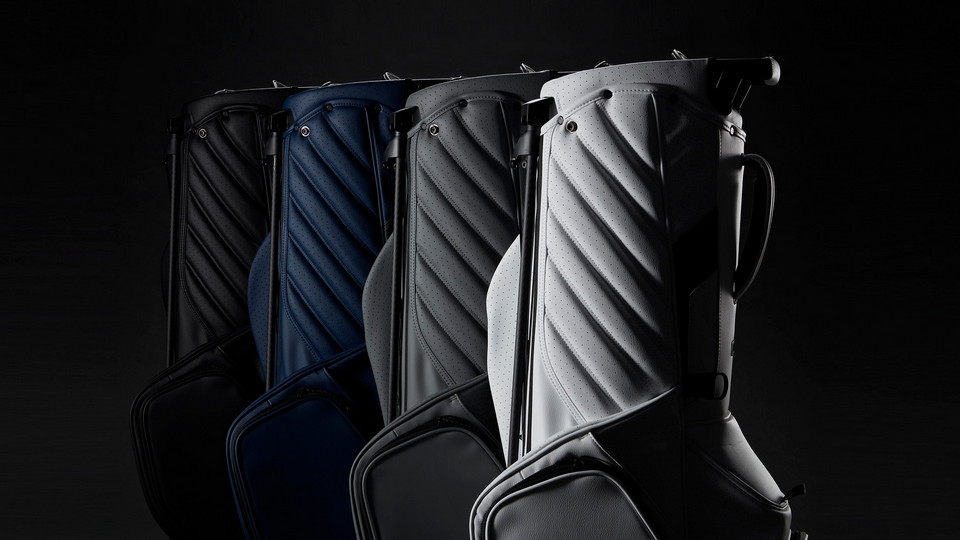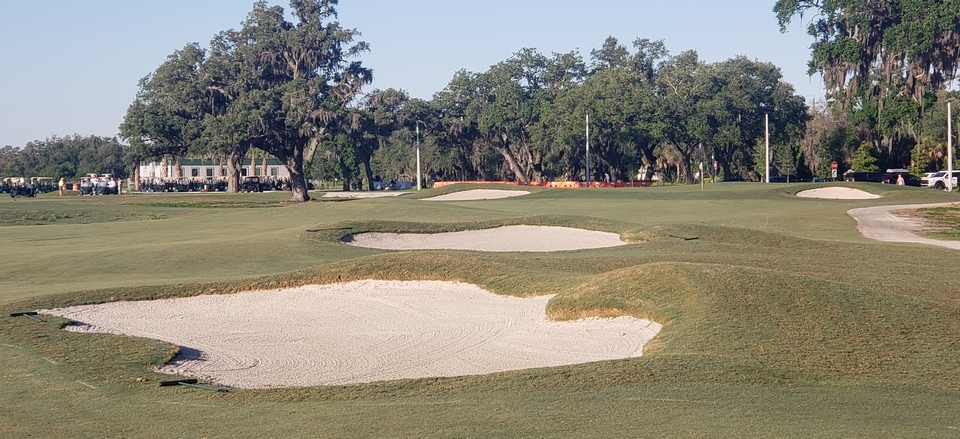Tuition
Perfect pitching - Get the moves like Stricker
Few stats are more telling that the one PGA Tour player Steve Stricker has dominated over the last five or six years. In the category of nearest the pin from 50-125 yards, Stricker has ranked No.1 in three of the last five seasons and currently tops the table with an average of 12’ 9” from the pin. Mind boggling when you stop and think about it – just imagine the effect on scoring if you could even get close to matching this consistency? Clearly, Stricker’s wedge technique is one worth exploring. So let me share with you some thoughts on how to control your spin, distance and trajectory in the wedge game, based on a U-shaped swing that produces pin-point accuracy.
Eliminate wrist hinge and create unit of left arm & club
The secret to controlling the spin, trajectory and landing distance of your wedge shots lies in your ability to govern the angle and the speed of the delivery of the clubhead through the ball. And as Steve Stricker proves so conclusively, this is achieved most consistently with a technique that eliminates wrist action and places the emphasis for control on the bigger muscles in the body – i.e. the torso and the shoulders as you rotate away from and then toward the target.
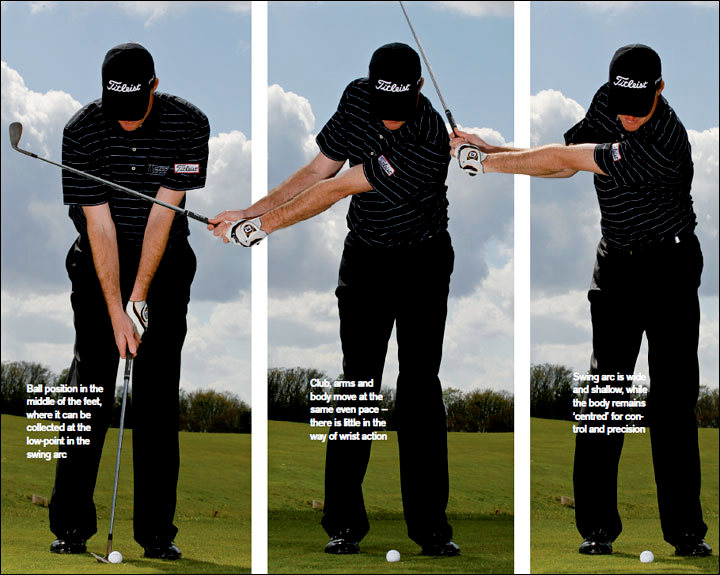
Ball position in the middle of the feet, where it can be collected at the low-point in the swing arc.
Club, arms and body move at the same even pace - there is little in the way of wrist action.
Swing arc is wide and shallow, while the body remains 'centred' for control and precision.
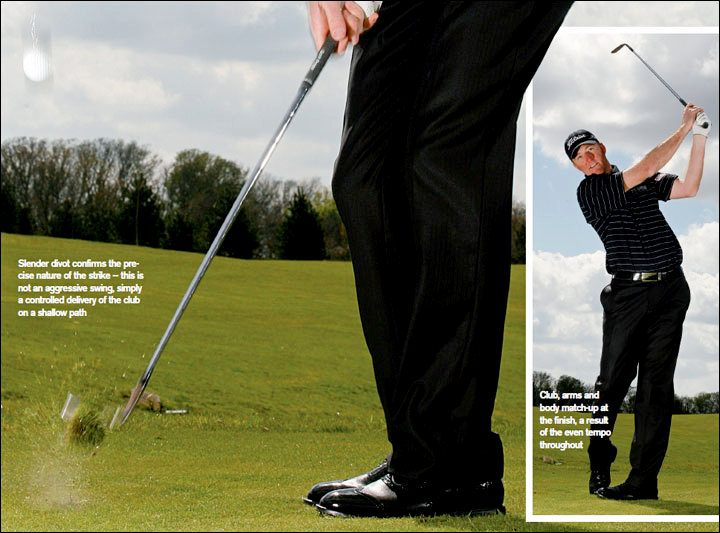
Slender divot confirms the precise nature of the strike - this is not an aggressive swing, simply a controlled delivery of the club on a shallow path.
Club, arms and body match-up at the finish, a result of the even tempo throughout.
When you work on the drill illustrated on this page, effectively denying the left hand its ability to hinge, you will find that you develop the sensation of the left arm and the club working as one unit in the swing. And that’s exactly the feeling you want to cultivate to play these precision shots from within 125 yards or so. Generating maximum speed is not the issue here – we are looking for a technique that enables us to control and repeat a consistent speed with a swing that produces predictable results. A wide, U-shaped swing returns the natural loft to the ball – and that’s your first goal in the quest to becoming a master of the wedge game.
Club, arms and body 'match up' in a swing made in an even tempo

Key to the technique Steve Stricker uses so effectively is the ‘quiet’ nature of the wrist action; the swing is controlled by the rotational speed of the body. To get this feeling, take the grip of your wedge in your left hand, snug with the base of your thumb, and then close the fingers to secure it. Doing this denies the left wrist the freedom to hinge and so makes for a terrific practice routine that will encouraged you to make a wide, U-shaped swing that is paced and controlled by the rotation of the body.
One of the most striking characteristics of all great wedge players is the rhythm and tempo of the motion – nothing is ever hurried and the quality of the strike is consistent, shot after shot. When you practice, picture the moves of a Steve Stricker in your mind; pace your swing evenly on both sides of the ball. Luke Donald is another player who displays the same metronome-like quality. And this must be your sphere of focus as you look to develop your skills in this vital area of the game. Work on making half- and three-quarter length swings and simply adjust the beat of your tempo to vary the distance you fly the ball. As per my example above, try making a half-swing at a regular pace with your Gap wedge (and laser the distance you land the ball). Then repeat that same length swing but with a slightly more up-beat tempo, and again measure the results.
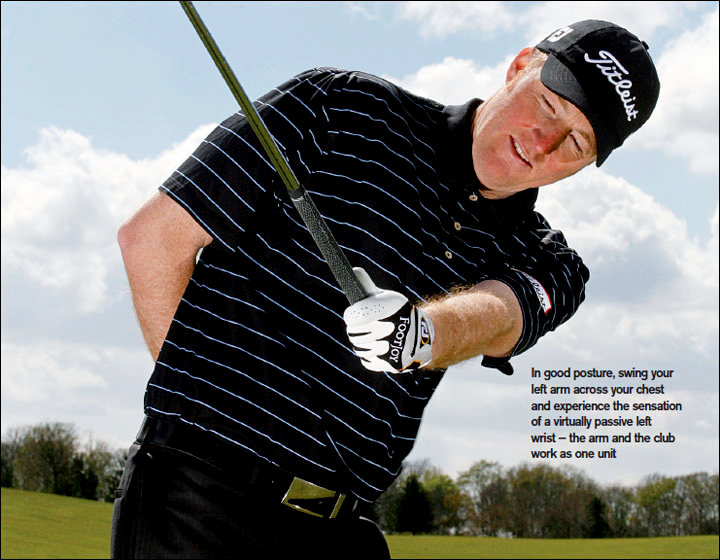
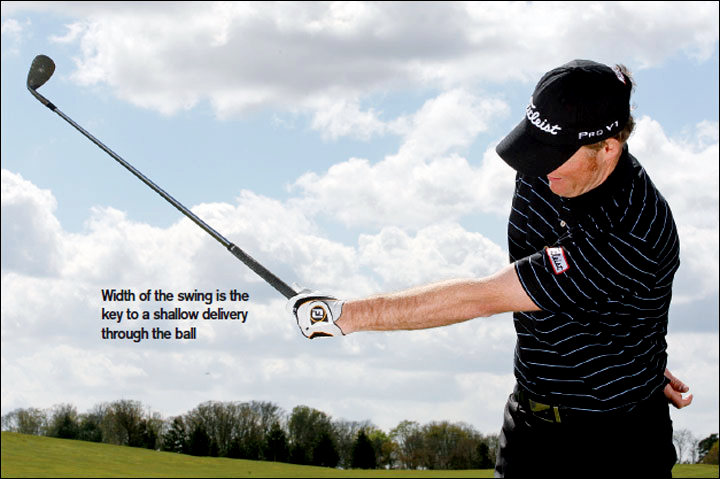
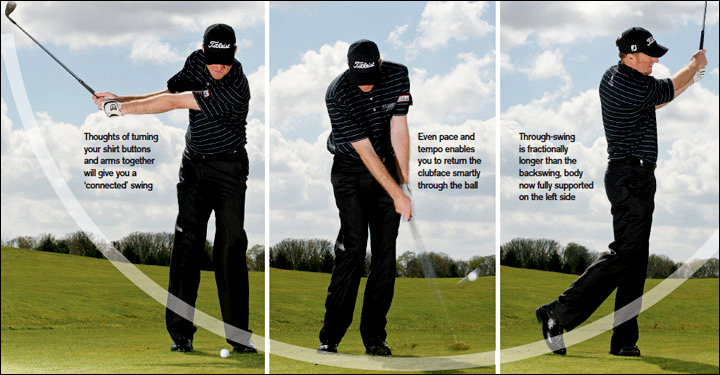
Thoughts of turning your shirt buttons and arms together will give you a 'connected' swing.
Even pace and tempo enables you to return the clubface smartly through the ball.
Through-swing is fractionally longer than the backswing, body now fully supported on the left side.
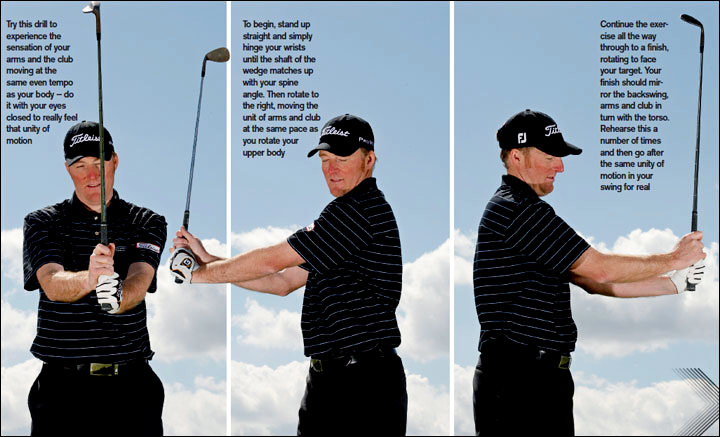
Try this drill to experience the sensation of your arms and the club moving at the same even tempo as your body - do it with your eyes closed to really feel that unity of motion.
To begin, stand up straight and simply hinge your wrists until the shaft of the wedge matches up with your spine angle. Then rotate to the right, moving the unit of arms and club at the same pace as you rotate your upper body.
Continue the exercise all the way through to a finish, rotating to face your target. Your finish should mirror the backswing, arms and club in turn with the torso. Rehearse this a number of times and then go after the same unity of motion in your swing for real.
In a short space of time you can produce a matrix of different shots with your scoring clubs, fine-tuning your distances with, say, two distinct speeds which you can then replicate out on the course. So, you have a half- and three-quarter swing with your Wedge, your Gap wedge and Sand Iron, and two exact landing distances with each of them, according to your tempo.
Feel and maintain radius in a controlled swing

Key to this drill is adjusting the flexi cord so that it is taut at the set-up, creating this relationship between your sternum and the clubshaft. The challenge then is to maintain that as you groove your moves, creating a shall U-shape swing.

Maintaining this relationship between club and torso all the way to the finish is vital. Note also the role of the legs in the swing – there is no driving through impact. The lower body is supportive but passive.
Another exercise that continues the theme: using this flexi-cord, which is designed to attach to a golf club, we can create a practice routine that quickly reinforces the sensations we are looking for in this technique – specifically creating and maintaining width both on the way back and again on the way through to a finish.
I can remember reading a pitching feature by Nick Faldo in which he talked about the good feelings that can be experienced if you think about getting the buttons on your shirt moving in the backswing, and this exercise builds on that idea with a practical drill that encourages the togetherness of the club and your torso as you rotate. I have simply attached one end of the cord to the shaft, the other to my shirt, opposite the sternum, adjusting the length so that it is taut at the set up, creating a radius between my body and the club that is then maintained throughout the rehearsal. You really do enjoy a wonderful feeling of the relationship between your torso and the club as you swing back and through – grooving the sensations of a body-controlled, U-shaped swing.
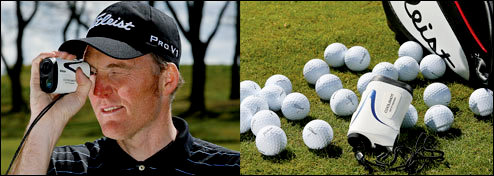
Ultimately, it boils down to practice! Nothing is more valuable to your game than the time you can devote to improving your wedge play. Ideally, get yourself a measuring device so that you can identify your exact landing distances with each of your scoring clubs.
Groove rhythm and 'connection' with the towel
A trusted favourite – but a drill that you need to understand before you go out and make the mistake that I have seen many amateur golfers make, believing it to be applicable to the full swing. Which it is not. The towel drill is specifically designed to help keep all of the components of the swing moving at the same even pace up to this half-way back and halfway through position. In other words, it is perfect to synchronise the movement of the club, your arms and body in the process of developing the heart of your basic pitching technique. But under no circumstances should you go out and train your full swing – any attempt to keep the towel in place beyond this halfway position will result in the movement of the arms being severely restricted and you will fail to enjoy the freedom they need to complete a full swing.


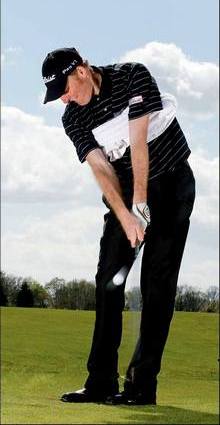
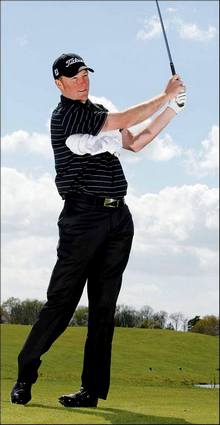
But in the context of pitching, this is a terrific exercise with which to warm up your swing and ingrain the feeling of the club, arms and body working together at the same even pace. The key is to limit yourself to this halfwayback position, the left arm parallel with the ground, and then unwind to the finish in balance, with your weight supported on your left side. You can hit balls as you do this. And you will discover that the better you move, the more sweetly and consistently you will strike the ball. This is all about improving your so-called muscle memory.
Repetition will make these moves habit and you will automatically swing this way on the course. Switch between your scoring clubs and develop the ability to reproduce a consistent trajectory of shot, gently bruising the turf with each strike. When you take the towel away you will be surprised at how much you retain the feeling of that togetherness, allowing you to focus on the speed of your body movement to control distance.
It has been my pleasure to contribute this, my debut article, in Golf International and I hope you have found my thoughts and observations interesting. There is nothing better for your game than confidence in the scoring zone, so work on it. For more information, check out the iPad issue, too, with video lessons shot to support this instruction, adding a little more detail on how to control spin and distance, along with assorted practice drills.
